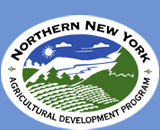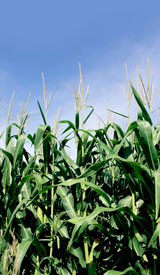October 22, 2007
Contact: Dr. Quirine M. Ketterings, Cornell
University, 607-255-3061;
Joe Lawrence, Nutrient Management Spear Program, 607-255-3061
Four New Crop Management Resources Online for NNY farmers
The Northern New York Agricultural Development Program website at
www.nnyagdev.org is providing area
farmers with four new resources on the interaction of soils, nutrients
and crops. The publications are part of a series from Cornell
University�s Department of Crop and Soil Sciences and the Cornell
Nutrient Management Spear Program. The fact sheets � found in the
Agricultural Environmental Management section of the website at
www.nnyagdev.org � are designed to
help farmers make decisions about field crop management, including which
crops to plant, when, and on what fields based on the availability of
essential nutrients, fertility management and good stewardship
practices.
The How Quickly Will Soil Test P Increase? fact sheet reports research
on the effects of how manure and fertilizer applications affect the
changes in soil test phosphorus (P) levels in farm soils to help
producers learn how long it may be before soil test P levels will reach
a level at which alternative manure applications sites must be found.
For example, if manure is surface applied and not incorporated into the
soil, the ammonia portion of manure nitrogen(N) is lost. Sand affects
the optimal 2:1 N to P ratio, thus surface application of manure to meet
crop N needs requires higher manure application rates leading to a
phosphorus application that can be twice as much as what the plants will
be able to remove through harvest. This increases soil test P over time.
The study also shows how quickly soil test P levels rise for different
soils.
The Phosphorus Removal by Field Crops fact sheet shows how to estimate
manure and fertilizer application limits if the P Index is high, based
on the projected removal of phosphorus by a crop. The P Index requires
producers to limit phosphorus application to the estimated level of crop
removal when the risk for a farm is rated High. No P in any form may be
applied to fields rated Very High.
The Soybean Nitrogen Credits fact sheet provides the background behind
an adjustment in Cornell guidelines for applying a soybean nitrogen (N)
credit (an estimate of how much N remains in the soil for crop uptake)
of 20 to 30 lbs of nitrogen per acre for corn production only during the
first year of corn planted after a crop of soybeans. This rate of
application is lower than for corn planted after corn. In other words,
the optimum economic N application rate for corn after soybeans can be
lowered by 20-30 lbs of N per acre thus saving farmers money for N
fertilizer not purchased.
The Late Season Stalk Nitrate Test fact sheets provides the sampling and
submission procedure for evaluating the nitrogen (N) supply available
for corn during the past growing season. The stalk nitrate test results
are useful in planning for adjustments in the fertilization program for
the next year�s crop. This fact sheet notes that multiple year testing
is essential for success with using this test.
Ongoing NNY soils research will add to knowledge base
Studies currently underway using 15 Northern New York non-calcareous
(without limestone) soils and ten different P sources will determine the
impact of the type of fertilizer (ammonium or calcium based, liquid or
granular) used with manure separation and-or chemical treatment (alum or
aluminum chloride) on plant-available phosphorus in the soils.
Links to these and other fact sheets providing valuable information and
recommendations specific to the Northern New York region are found on
the Northern New York Agricultural Development Program website at
www.nnyagdev.org. The farmer-led
Northern New York Agricultural Development Program provides funding for
research, education and outreach to assist agricultural producers
improve on-farm efficiencies and profitability.
###



